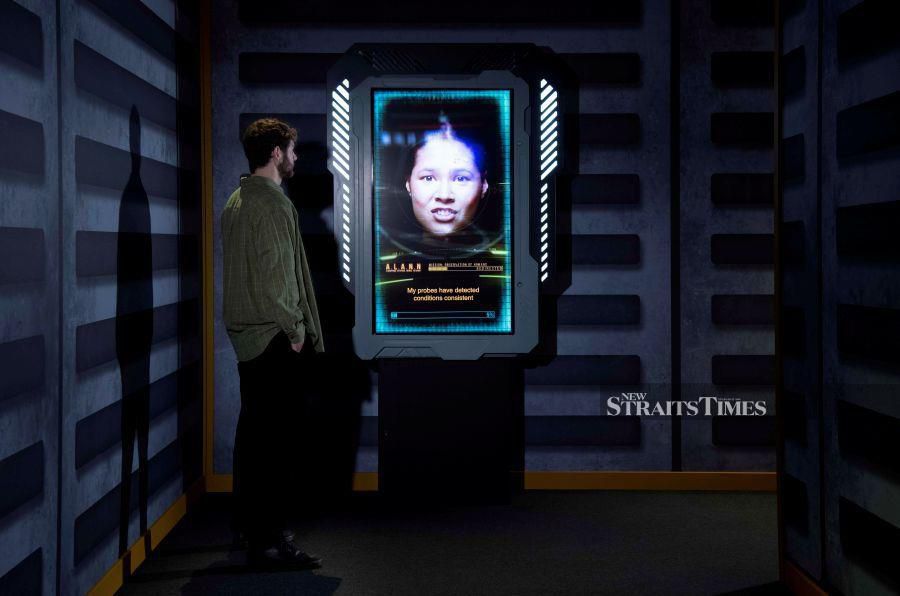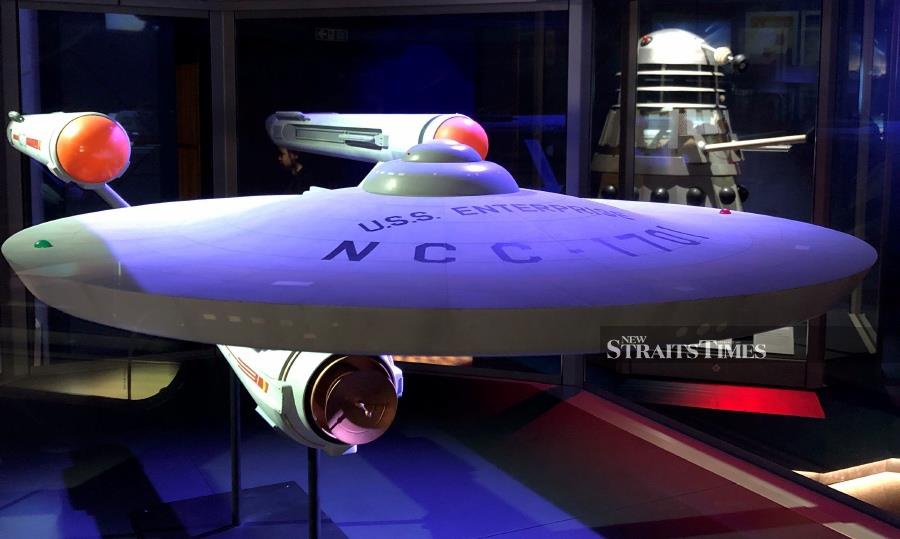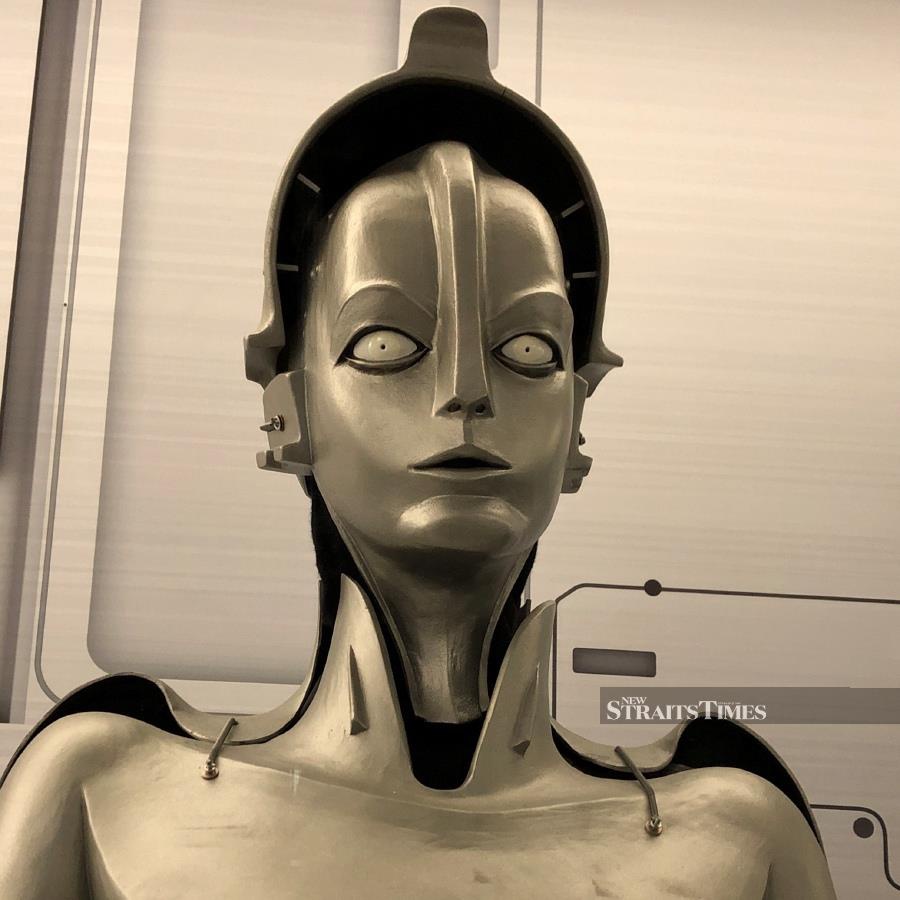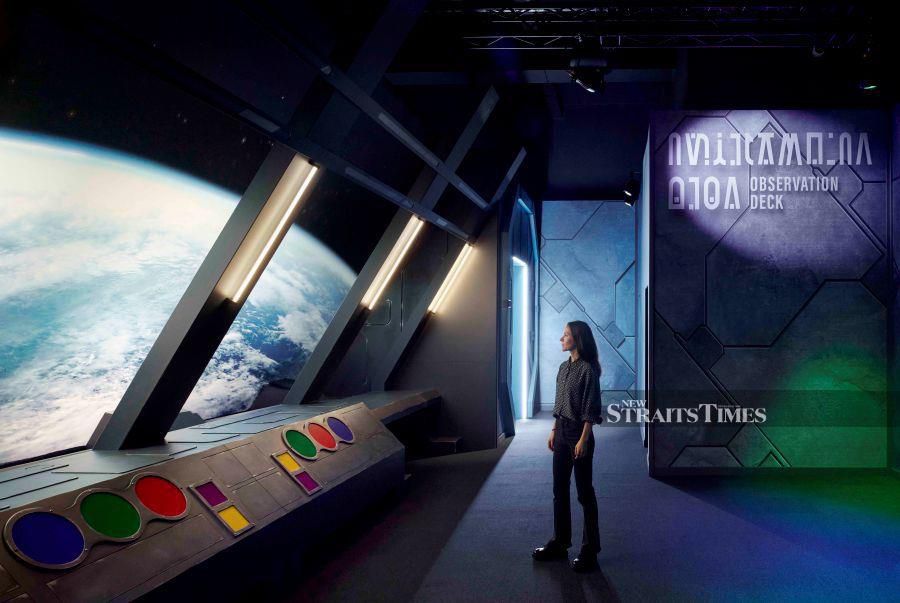SCIENCE fiction comes in and out of fashion, just as space exploration does. Curiosity about distant horizons is always with us, and there have been fanciful imaginings ever since humans puzzled over the meaning of the night sky.
Some of the more recent visualisations have been assembled by the questing curators at London's Science Museum. The outcome is Science Fiction: Voyage to the Edge of Imagination.
This is the sort of talk that will excite Trekkies, Star Warriors and more recent aficionados of the genre. The publicity even invites us "to boldly go" — an expression that will bring tears to the eyes of TV viewers of a certain age.

Yes, Captain Kirk and crew are represented, as are countless other sci-fi classics. It's a big exhibition and hard to think what they might have left out. There's a lot of Dr Who, a massive hit in the United Kingdom that has not always been well received by other earthlings. Perhaps the shoddiness of the sets and costumes in the 1960s has put off some audiences. The same should apply to Star Trek, but somehow that one has travelled better.

Most of the content is of universal interest, presented in an engaging manner and with a much larger budget than Dr Who or the early Godzilla films. You start and end the exhibition in a sort of space craft.
The one that takes you into the galleries is just a bit too smooth to give the impression of having been on a long and arduous journey. It would be better if it simulated the feel of a small earthquake, as is done with the Geology Museum next door.
APPEAL ACROSS THE AGES

Once into the real gallery, it's more like a regular display of museum stuff. Science fiction covers a wide range. From the leather-bound fiction of Jules Verne, to the still shocking special effects of Alien, there's a huge variety of material.
The classics are well represented: full-size Daleks for Dr Who enthusiasts (Whovians), and for everyone else, a less-than-full-size model of the USS Enterprise, signed by George Takei, a sci-fi pioneer of East Asian descent.
It's not all about the final frontier though. Frankenstein is one of the early examples of science fiction, written by a teenage female, which is hardly the stereotype of later fans. The Science Museum is fortunate to have an original Boris Karloff costume that drapes an alarmingly realistic figure of the unfortunate monster from the definitive horror film of 1935, Bride Of Frankenstein.

Even earlier than that was the show that gets movie buffs as excited as Citizen Kane. Metropolis was made almost 100 years ago and the female robot from the poster looks as sleekly modern as she must have done in that distant era. And where would we be without an imposing life-size figure of the alien from Alien? Even the exhibition's younger visitors seemed in awe of that one.
Other parts of the display try to replicate extra-terrestrial locations or create a new language that might be used by residents of distant galaxies. Some of it is a bit too serious for the average sci-fi nerd, but perhaps the field is becoming more earnest about the possibility of actually being out there among the extra-terrestrials.
We have never been closer to intergalactic travel, but thank goodness we do not have to look at Elon Musk or Richard Branson selling the concept. Instead, the exhibition gets into hot topics of the present, such as the environment.
ESCAPING TO NEW WORLDS

One of the most intriguing exhibits is a photo collage that looks like a classic Chinese literati painting. However, replacing the towering mountains in the mist is a pile of rubbish so cleverly executed by Yao Lu that we do at first marvel at its beauty.
Another memorable work that would be classified as art and not sci-fi memorabilia is a 3-D model cityscape of the future. Created by the architect Liam Young; it envisages living spaces that make Kuala Lumpur's Mont Kiara look like the open prairie.

It's more thought provoking than Darth Vader's helmet, which is also on display, and makes you yearn for a depopulated planet. Perhaps the only solution is to start again somewhere else — and wreck that one too.
So much science fiction is about escaping to new worlds. Now we know why. Sci-fi doesn't provide solutions to the problems on Earth; it's those distant frontiers that call. The most mesmerising part of the exhibition is being on the observation deck of a spaceship as it glides over our planet.

It's a serene feeling to be above the chaos of Earth. Looking down in silence, we are sufficiently far away to avoid seeing the destruction of people and the landscape that are so much part of our tenancy on this heavenly sphere.
It must look like a tempting prospect for travellers from a planet that is as beyond hope as, for example, Krypton. Some humans will experience a curious longing for home as it could be; others will side with those sci-fi writers and film directors who could clearly never wait to get out of here. After visiting this exhibition, it's easier to see the attractions of the final frontier.
Follow Lucien de Guise at Instagram @crossxcultural.





